American Foulbrood (AFB)- THE WORST LARVAL DISEASE
American Foulbrood (AFB)
We are digging deeper in our series of honeybee diseases. Let's start with the worst of them all. American Foulbrood, a.k.a. AFB
Causative agent
The causative agent is spore forming bacteria Paenibacillus larvae. Spores can live in honey, beeswax, soil, bee equipment etc. for many years. It is the most dangerous and contagious bee disease.
AFB Symptoms and Diagnosis
Inspect the capped brood. It is observed in the capped brood not in the open brood.
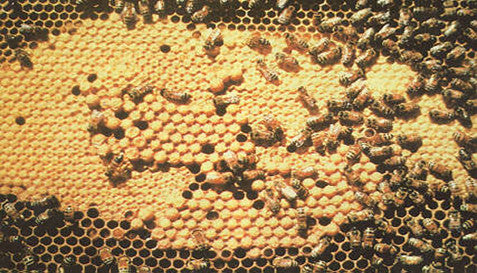
This is a healthy looking brood comb. Brood area is uniform, no holes on the capped brood, the color of the brood is light (if the combs are old the capping will be darker), there is no abnormal smell. There are some open cells but most likely there is pollen or honey in those cells.
Let’s look at the brood of diseased colony.


These pictures are from an infected colony. It is too late if you have a brood area like this.
- Scattered brood. Brood area is not uniform. Open and sealed cells are mixed
- Infected pupae change color (yellow, brown and finally black) and die in the sealed cells, become “ropy”, and smell badly
- Sunken cappings, the color of the capped brood looks darker and greasy.
- There are holes on the capped cells, pupa is dead in the capped cells
- Toothpick test: Dead pupa is decayed, smells like sour wood glue.
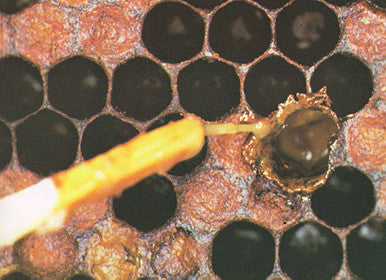
When a toothpick is inserted inside the cells through the holes, and stirred, dead larva sticks to the cell, does not come out completely and becomes ropy and brittle after a while. This is very accurate and simple test.
- Dead pupa’s tong sticks out.
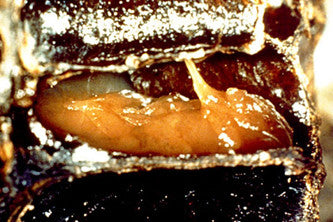
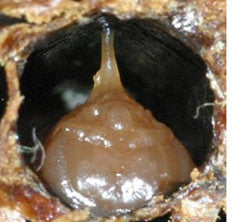
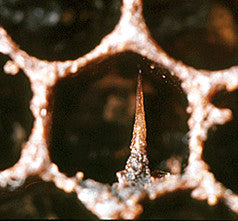
- Scales (Dried pupae) sticks to the bottom of the cells. The spores can stay alive for up to 20 years. Each dead pupa can have millions of spores. Giving these old contaminated combs to healthy colonies spreads the disease.

Transmission of the Disease
- Robbing contaminated honey from diseased colonies. Diseased colonies are usually weak and they cannot defend themselves. They are pruned to rob.
- Careless beekeeping
- Uniting diseased colonies
- Interchanging combs of honey, pollen between colonies
- Contaminated beekeeping equipment (combs, hives etc)
- Feeding bees contaminated honey
- Migratory beekeeping spreads the disease from apiary to apiary or from region to region.
Prevention and Control of AFB
- Inspect colonies routinely. If there is any sign of AFB report it to the bee inspectors in your area. Do not ignore the disease. You may save the hives if it is in the early stage.
- Genetic resistance. Some bees are resistant to disease (Hygienic bees). Some bees can detect the dead larvae under the capped cells and open holes on the cappings. Other bees remove the dead larvae or pupae.
- Must burn diseased colonies. You should kill the bees, bur all the combs of brood, honey, pollen, even the empty combs.
- Scrape and scrub the bottom board, and hive bodies.
- If you have Apimaye hives and if the colony is not seriously infected the hives can be disinfected by soaking in 10% bleach and scraping the bottom board and hive bodies with a brush before soaking it in the bleach.
- Some beekeepers used to feed the colonies with oxytetracycline (200 mg/colony) but it is not recommended any more. Please consult the bee inspector in your county. Veterinarians may recommend using antibiotics but do not feed the bees during main nectar flow. If the veterinarians recommend antibiotics, follow their recommendations or use the simple formula given below.
|
Product Strength |
Drug |
Powdered sugar |
Feeding |
|
TM-25 (25 gm/lb) or, 10 gm/181gm |
1 tsp (1/8 oz.) |
3 Tbsp (1 oz.) |
One colony |
Give 1 Tbsp of mixture to 1 package bees or 5 frame nucs, 2 Tbsp for 10 frames colonies, and 3 Tbsp for 2 story hives. Repeat 3 times with 4-5 days intervals.
